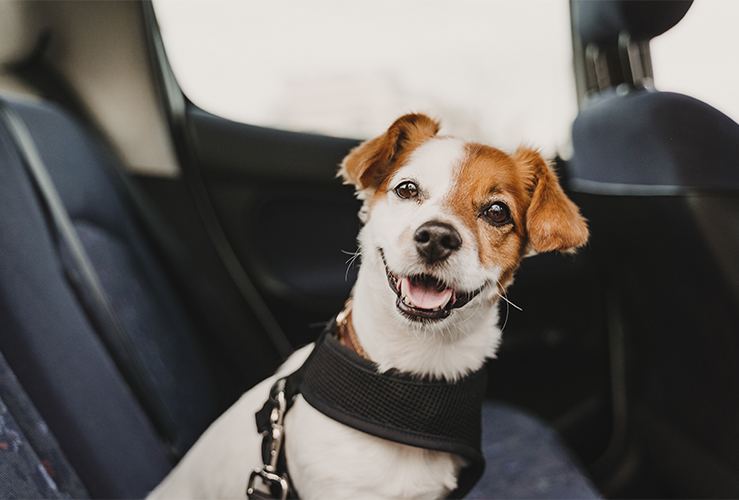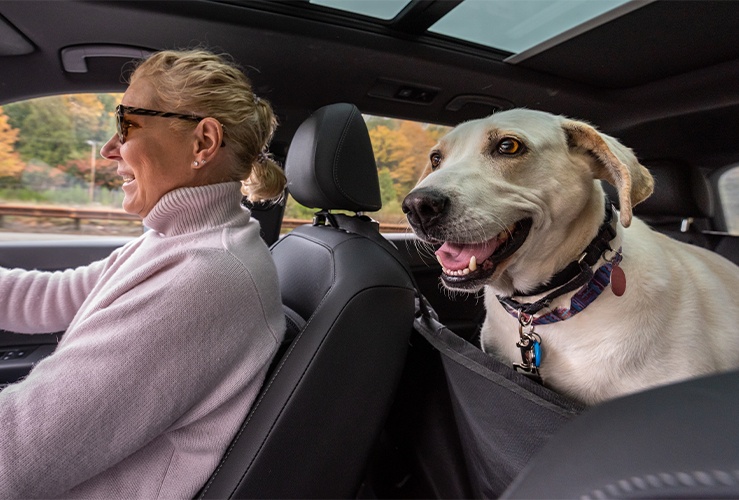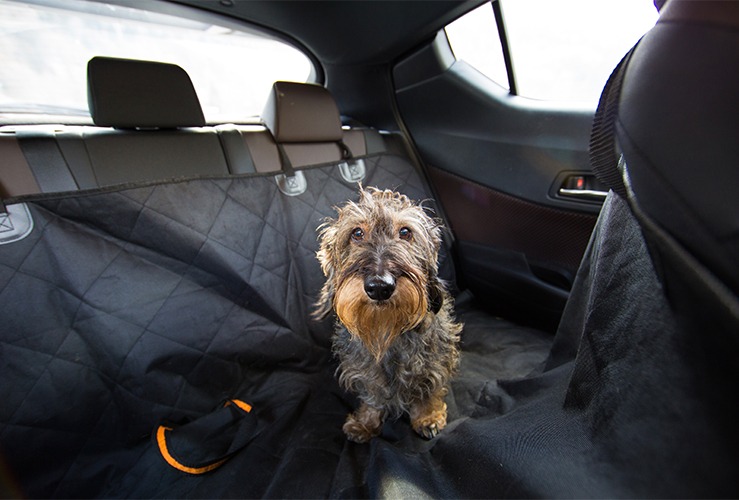Planning to take your pet on a road trip for the first time? If so, it's important to ensure their journey is safe and comfortable, and that they do not stop you from concentrating on the road.

Risk of an accident
If your pet is allowed to move around in your car’s cabin, you as a driver may become distracted, which could increase the chances of an accident. While there is no specific law against allowing this kind of risk, the Highway Code states in Rule 57:
“When in a vehicle make sure dogs or other animals are suitably restrained so they cannot distract you while you are driving or injure you, or themselves if you stop quickly. A seat belt harness, pet carrier, dog cage or dog guard are ways of restraining animals in cars.”
'Driving without due care and attention'
If you don’t take reasonable precautions to secure your pet, and you're involved in an accident, you could be pulled over for not 'driving without due care and attention' - which could result in between three and nine points on your driving license.
What are key reasons to ensure your pet is safe and secure in your car?
There are a number of reasons to ensure that your pet is safe and secure in your car. These include to:
- Prevent your pet from contributing to an accident.
- Avoid a potential fine of up to £5,000 - if your pet contributes to an accident.
- Avoid points on your license.
- Avoid having your car or pet insurance invalidated because you didn’t follow the Highway Code.

How can you secure your pet while driving?
Consider the following methods of keeping your pet safe, secure and comfortable while in your car:
Pet carriers
Ideal for small dogs, cats and rabbits. Secure in the boot or on back seats with seatbelt.
Cages and crates
Cages and crates may also help keep your pet secure. Ideally placed in the boot.
Note: Never place a carrier on the front seat because they could be hurt if the airbag is released. However, small carriers can be placed in the footwell.
Back-seat hammock

These devices are fitted between the back of the front seats and the back seats. They allow your pet to lie down and stop them from falling off the seat.
Harnesses and belts
You can buy special dog harnesses that clip securely into the standard seat belt fitting. These give the dog some room to move while keeping them away from the front seats - and preventing injury in the event of an emergency stop.
Dog guards
If your dog travels in the boot area, a dog guard can be placed between the boot and the rear passenger seats. Choose one with a headrest, since the mesh variety may injure your pet in the event of a sudden stop or collision.
Windows
While your dog may like poking their head out of the window and enjoying the breeze, it is a potentially dangerous practice. Your dog's eyes may be injured by grit or other debris; or they may sustain a head or neck injury if you stop suddenly. And while it may be regarded as entertaining, dogs peering from car windows can distract other road users.
When to leave your pet at home
According to Defra - the Department for Environment, Food & Rural Affairs - you should not travel with a pet in your car if they are ill or injured; if they have just been born and have an unhealed navel; if they are not with their mother and are unable to feed themselves; if they have given birth in the last two days; or if they are heavily pregnant.
Tips for making your pet comfortable on the road
- Make regular stops for exercise and toilet breaks.
- Avoid feeding them 2-3 hours before you start your journey - so there are no messy accidents. Don’t give them snacks during the journey.
- Make sure your pet goes to the toilet before the journey commences.
- Ensure water is on hand - non-spill bowls are available.
- On hot days, make use of air conditioning or keep the windows down.
- Don’t leave your pet alone in a parked car when it's hot - they can quickly overheat and dehydrate, with potentially fatal consequences.
- Drive gently - don’t accelerate or brake harshly, as this may hurt your pet.
- Travel sickness - medication is available to help prevent sickness or diarrhoea.
If your pet is unused to car travel, take them on a few short trips to get them used to the process.




